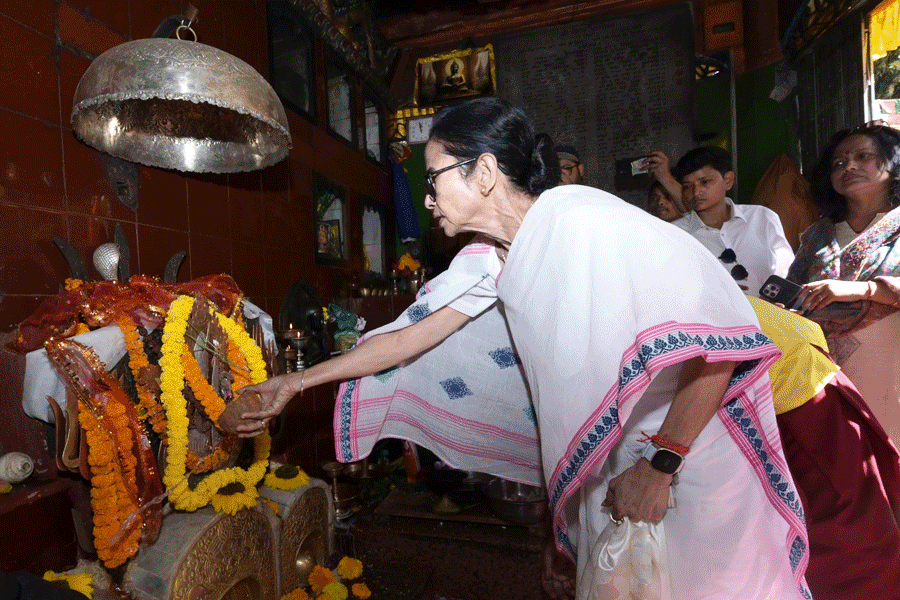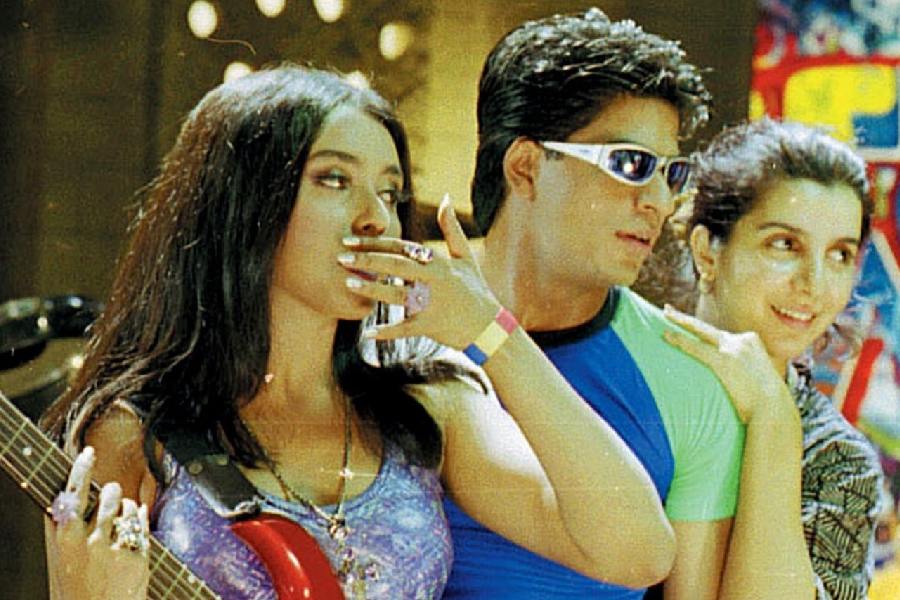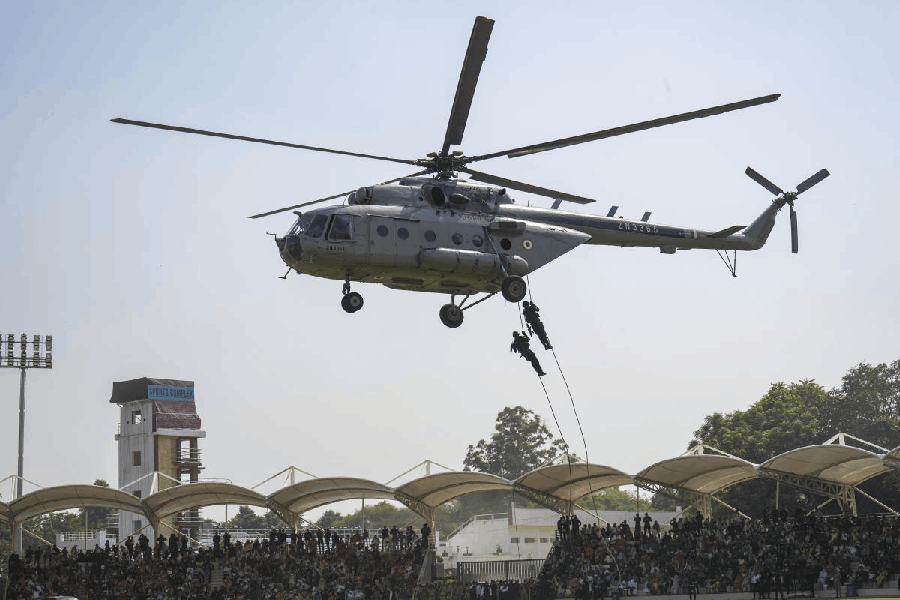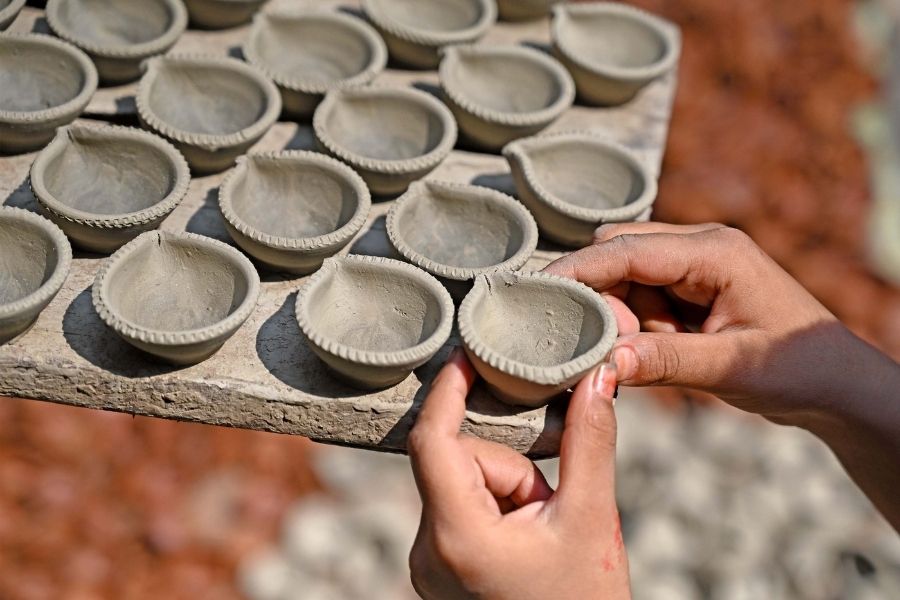 Friday, 17 October 2025
Friday, 17 October 2025
 Friday, 17 October 2025
Friday, 17 October 2025
The Board of Control for Cricket in India, which said after the Pahalgam attacks that India will not play against Pakistan going forward, has decided to infuse nationalism into sports by inviting three service chiefs to attend the Indian Premier League final on June 3, to pay a tribute to their "heroic efforts" during Operation Sindoor.
But the decision doesn’t come as a surprise as history is privy to a fusion of sport and statecraft. Sports have often been the focal point of diplomatic breakthroughs, led to conflicts, propaganda to reconciliation.
The most notorious example remains the 1936 Berlin Olympics, when German dictator Adolf Hitler transformed the Games into a propaganda tool to promote Aryan supremacy, Nazi ideology, and the power of the Reich.
The regime banned Jewish athletes and used the event as part of their "spiritual mobilisation" for future conflict. Ace cinematographer Leni Reifenstahl’s technical skills transformed the Games into a visual spectacle. But Black American athlete Jesse Owens's four gold medals provided a powerful counter-narrative to the racial supremacy theory.
Two years earlier, Benito Mussolini's Italy had hosted the 1934 FIFA World Cup with similar intentions, using the tournament to stoke nationalist fervor and rally support for his expansionist policies.
The event coincided with Italy's aggressive foreign policy buildup, including preparations for the invasion of Ethiopia.
Beijing’s hosting of the 2012 Olympics and Qatar's hosting of the 2022 FIFA World Cup illustrated how nations use sporting mega-events to enhance their global image and soft power, despite controversies over labour rights and human rights records.
South Africa's hosting of the 2010 FIFA World Cup was an effort to showcase post-apartheid unity and reintegration into the global community, using sport to promote national reconciliation.
Sports has also built bridges where negotiations failed.
"Ping-pong diplomacy" between the United States and China in 1971 remains the gold standard. The American table tennis team's invitation to China, a first since Mao Zedong took over China in 1949, broke decades of diplomatic silence and paved the way for President Nixon's historic visit and the normalisation of relations.
Cricket has served similar diplomatic functions in the subcontinent. In 1987, Pakistani President General Zia ul-Haq attended a Test match in India, using the occasion as a gesture of goodwill to ease bilateral tensions. The sight of two nuclear-armed neighbours sharing a cricket pavilion sent a political message of peace.
The game played another role in 2004 to bring the two nations together. India’s cricket team toured Pakistan five years after the Kargil War. The high octane series perceivably brought the two nations closer to peace, atleast for a few years.
Baseball diplomacy followed the same playbook when former US President Barack Obama and President of Cuba Raul Castro, attended an exhibition game in Havana in 2016, symbolising the thaw in US-Cuba relations after decades of hostility that started from the late 1950s.
The 2018 Winter Olympics saw North and South Korea compete under a unified flag, a diplomatic gesture aimed at easing tensions on the Korean Peninsula, probably for the first time since the 1940s.
The Cold War turned sporting venues into ideological battlegrounds. The 1980 "Miracle on Ice," when an underdog American hockey team defeated the Soviet Union, became a metaphor for American values triumphing over Soviet communism.
The Olympic boycotts of 1980 and 1984 weaponised sports. The American-led boycott of the Moscow Olympics, protesting the Soviet invasion of Afghanistan, followed a Soviet retaliation at the Los Angeles Games.
The most tragic intersection of sport and nationalism occurred in 1969, when World Cup qualifying matches between El Salvador and Honduras contributed to the outbreak of the "Football War."
The matches inflamed existing social and political tensions, leading to a brief but deadly conflict that claimed thousands of lives.
The Falklands War of 1982 demonstrated how military conflicts can transform sporting encounters into charged symbolic battles. When England faced Argentina in the 1986 FIFA World Cup quarter-final, the football pitch became a stage for unfinished business.
Diego Maradona's controversial "Hand of God" goal and his sublime solo effort dodging six English defenders in the same match were viewed through the prism of the recent war. Maradona later acknowledged that he derived a political satisfaction from beating England so soon after Argentina's military defeat.
At the end of the match, Maradona was victorious, but battered and bruised by the incessant tough tacklers by the England team.
For Argentine fans and media, football provided an arena where they could symbolically triumph over Britain in ways that had been impossible on the battlefield.
Croatian football riots in the 1990s are widely considered to mark the unofficial beginning of the Croatian War of Independence. Soccer matches became rehearsals for the ethnic conflicts that would consume Yugoslavia and led to its disintegration.
Didier Drogba and his Ivory Coast teammates played a remarkable role in helping to bring an end to their country's civil war. Following their qualification for the 2006 FIFA World Cup — the nation’s first-ever appearance on the global stage — Drogba seized the moment in an extraordinary way.
From the locker room, the Chelsea striker delivered an impassioned plea broadcast on national television, urging both warring factions to lay down their arms and embrace peace. His message, raw and heartfelt, struck a chord across the conflict-ridden nation.
But Drogba didn’t stop there. He later convinced the Ivorian government to host a national team match in Bouaké, a city held by rebel forces. The decision to play in the heart of the resistance was a powerful gesture of reconciliation and unity — a demonstration that football could transcend politics and bloodshed.
The impact was profound. The players’ call for peace contributed to a ceasefire and helped pave the way for meaningful dialogue between opposing sides. Drogba’s intervention underscored the potential of sport — and athletes — to inspire national healing far beyond the pitch.
The 1968 Mexico City Olympics saw American athletes Tommie Smith and John Carlos raise black-gloved fists during the medal ceremony to protest racial injustice, linking sport with civil rights activism. The Tlatelolco massacre overshadowed the same Games, where Mexican forces killed hundreds of student protesters.
Today's IPL represents both continuity and evolution in this tradition. While cricket has always carried subcontinental political weight — every India-Pakistan encounter remains a proxy conflict — the formal involvement of military leadership marks a new development.
The tournament, with its blend of international stars and fierce regional loyalties, has become India's most potent soft-power export.
The timing of Operation Sindoor provides contemporary context that transforms a sporting finale into a statement of national resolve.
But the symbolism runs deeper. The BCCI has increasingly positioned itself at the forefront of sporting nationalism, leveraging cricket's status as a religion in India.
The board's recent assertiveness — refusing to allow Indian players to tour Pakistan, successfully pressuring for Champions Trophy venues to be shifted despite Pakistani objections—demonstrates cricket's transformation into a tool of geopolitical influence. The military tribute at the IPL final signals that this approach will not only continue but intensify.
When those service chiefs take their seats at the Narendra Modi Stadium on June 3, they will participate in a tradition stretching from ancient Olympia to modern Ahmedabad.
The IPL final will be broadcast live across multiple networks on June 3, with the closing ceremony expected to feature the military tribute alongside traditional entertainment.







